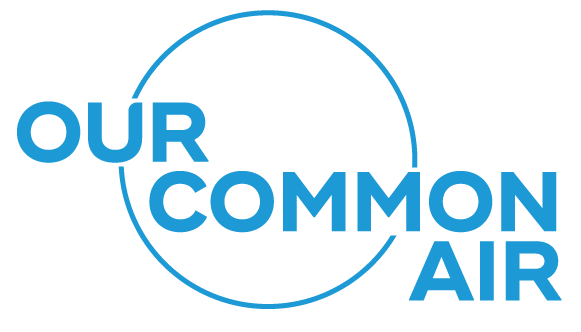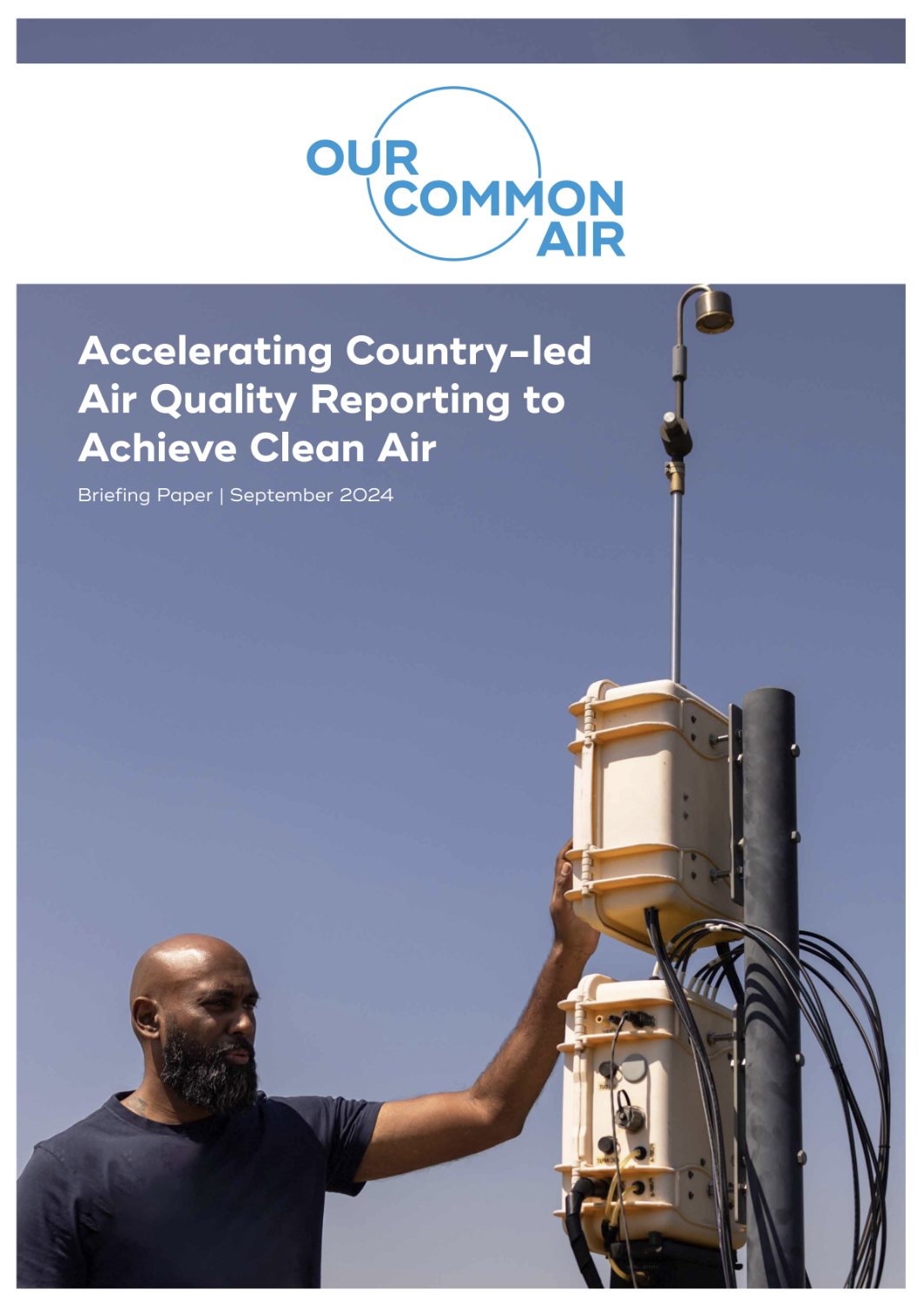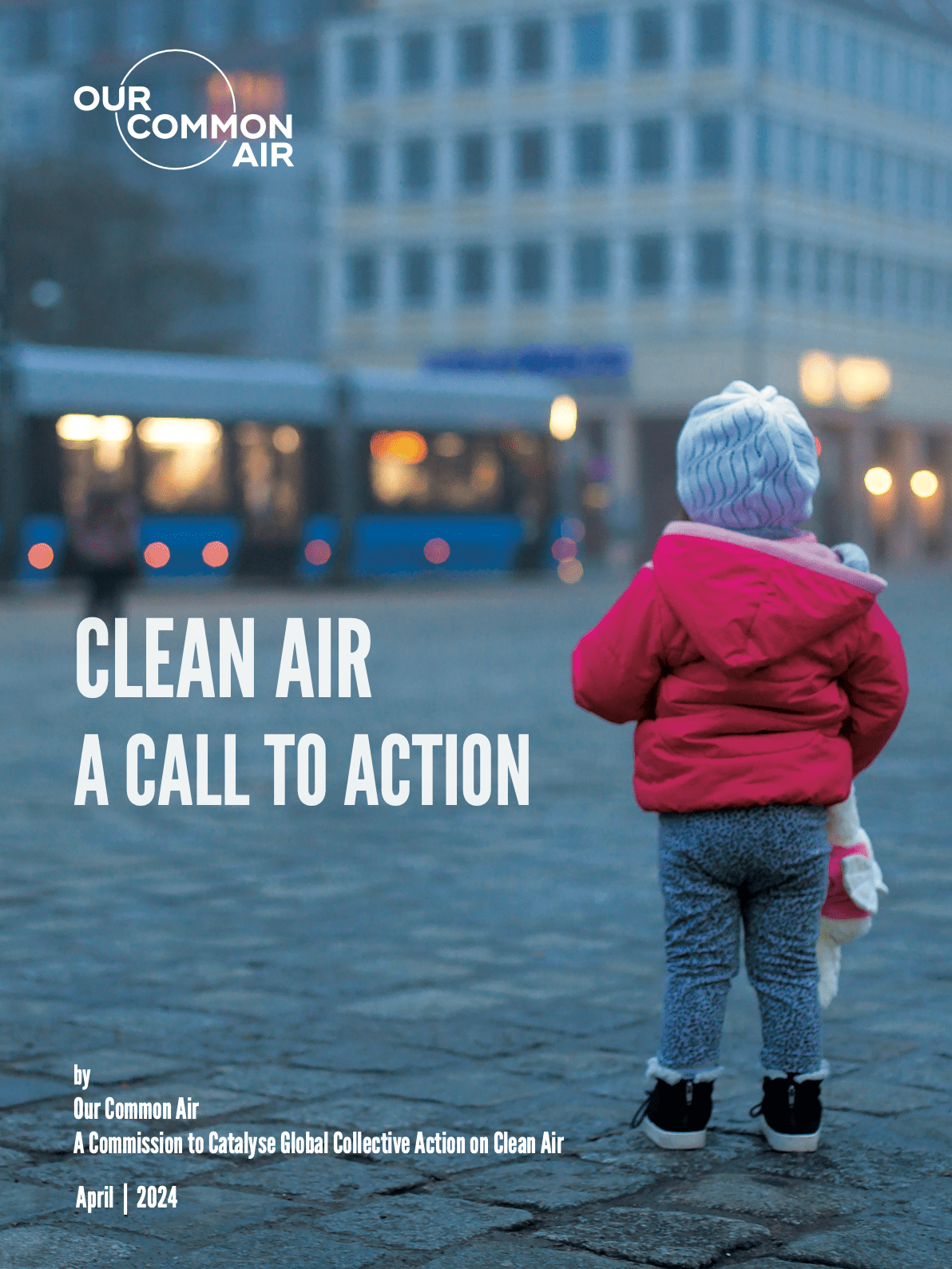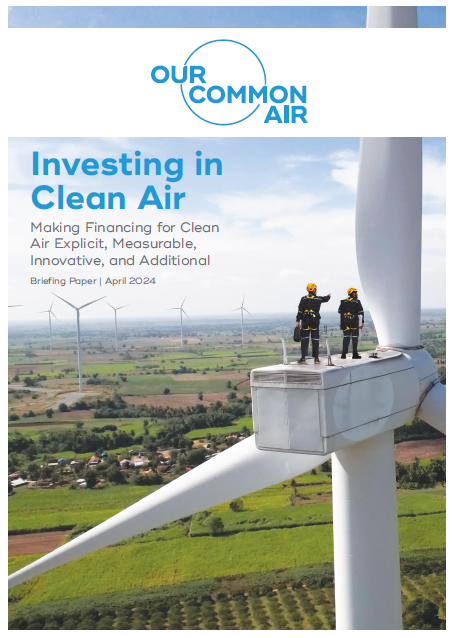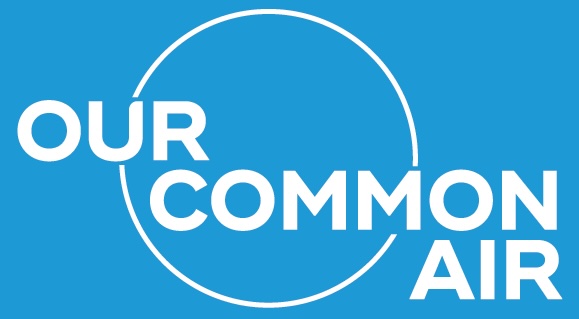
Accelerating Country-led Air Quality Reporting to Achieve Clean Air
A Briefing Paper from Our Common Air
A system is needed to track air pollution that combines existing and new data techniques in ways that bridge the gaps in global air quality information.
September 2024
Authors: Our Common Air
Suggested citation: Our Common Air Commission (2024). Accelerating Country-led Air Quality Reporting to Achieve Clean Air. Available at https://www.ourcommonair.org/accelerating-country-led-air-quality-reporting-to-achieve-clean-air
Executive summary
There is no single, authoritative, comprehensive, regularly updated, database that provides recent national air pollution levels around the world — not even for fine particulate matter, known as PM2.5, the deadliest and one of the most commonly tracked air pollutants. Access to basic, timely, recurring global air quality data is essential to identify hotspots for action, provide supporting resources, and track progress on pollution reduction across space and time. The invisibility in data, in turn, makes it harder to convince stakeholders to act, and to hold decision-makers accountable for policies, practices, regulations, laws and investments that impact air quality and public health.
A system is needed to track air pollution that combines existing and new data techniques in ways that bridge the gaps in global air quality information. Such a system is needed urgently, given the health burden of air pollution and the expected increase in that burden with the worsening impacts of climate change. In this paper we propose a country-led system that incentivises and enables governments to measure, share, and model air quality data – using PM2.5 as an initial focus, while also providing data coverage where air quality management infrastructure is currently lacking. In that way, we can ensure that no country is left out of this global effort. We also propose regular tracking of country-level air quality practices and national ambient air quality standards. We call for commensurate financial resources for
developing countries to participate directly, and for intergovernmental agencies to coordinate with other institutions to develop common methodologies and data protocols.
In this paper, we examine the existing tools and practices of international actors and discuss ways in which countries might work together to build on these efforts to design a global system with the support of existing international organisations and commensurate financial resources.
While we propose an initial focus on PM2.5 tracking, we also recommend measuring and tracking “super pollutants” such as black carbon and tropospheric (ground-level) ozone, which are often untracked and uncapped by governments. These air pollutants are bad for the climate as well as bad for health so, where a country determines that they are a national priority, they could be tracked as part of their nationally determined contributions (NDCs). Some countries — especially developing ones — are already doing this. Tracking these pollutants will also need additional financial resources and international support to poor countries in order to assess their capacity gaps to define and fulfil their financing needs.
Filling these gaps in tracking global air quality data is not only critical for understanding levels and trends in air pollution, it enables a deeper understanding of the full health, environmental, and economic impacts of air pollution. Global coverage of air pollution monitoring would also help advance collective progress on clean air and climate change, and help meet the goals of the Paris Agreement. Countries that include air quality actions as part of their climate commitments will have additional socioeconomic and health reasons to follow through on action on clean energy and urban transport, for example. Accordingly, we propose that each country have at least one government-installed PM2.5 monitor that shares data with the public in a fully open manner. While a single monitor is insufficient in giving an accurate country-wide picture, the installation, management, and open data produced from even a single monitor would be a meaningful step forward1 in the 39% of countries across the world that do not yet have this basic capability2. Alongside these foundational reference monitors, we propose the use of hyperlocal, low-cost, and real-time air quality sensors to supplement the reference data to create a hybrid network with wider coverage. We also propose a transparent system to track and report on the financial support provided to developing countries to build an architecture for tracking global air quality data.
Lastly, we propose that all governments and non-state actors such as cities, businesses, and investors set targets to limit levels of PM2.5 by 2030 in line with World Health Organization guidelines — or, recognising each has different starting points and circumstances, an ambitious target based on the WHO interim guidelines.
The case for global progress tracking
We need a global system to track progress of air pollution levels and clean air policies so we can unlock financing and technical assistance, and incentivise governments to set targets and report on progress. Tracking is most effective when it is both global in its data coverage – no country is left out – and credible. Annual worldwide progress tracking of air pollution and clean air policies at the national-level could motivate and enable:
- More finance to establish a data tracking infrastructure. Regular tracking of air pollution data can help countries identify gaps in their monitoring infrastructure to quantify the resources needed to build, maintain and upgrade the system.
- More finance to tackle air pollution. Up-to-date knowledge of national air pollution data and ambient air quality standards makes it clearer where finance can be most effectively applied to help and incentivize governments to address air pollution problems.
- Increased visibility in policy agendas. Regular tracking of global air pollution data, policies, and government targets helps to build global and local drum beats of progress on the issue, which are especially important for building social support for an ‘invisible’ issue like air pollution.
- Better informed clean air strategies. Tracking progress on air pollution enables countries and development finance institutions to learn from their successes, identify opportunities for improvement, and define strategic directions that can evolve with changing data.
- Increased trust. Creating a tracking infrastructure and ensuring all processes are transparent, that the underlying technical components are open-source, and there is a built-in preference for these efforts being country-led, will strengthen the capacity of the global air pollution ecosystem and build trust in the global tracking system.
Some countries do not yet have the infrastructure to estimate their annual pollution levels, due to lack of capacity to model them, lack of ground monitoring data to input into such models, or both. While we propose interim solutions such as relying on an external body to generate these estimates in collaboration with in-country scientists so that no country is left out, we also propose countries publicly catalogue their infrastructure and funding needs for country-level capacity building for air quality management. In time, support should be provided to these countries to develop the infrastructure for local-level monitoring and modelling, which in turn would enhance the quality and efficacy of global data, including satellite-derived data. This could be supplemented by the use of hyperlocal, real-time
sensors to create a hybrid network.
We need to develop mechanisms to incentivize funding to improve air quality management, roll out monitors, and build modelling capabilities. Research has shown that the existence of government monitoring data can bolster a country’s ability to create and enforce meaningful air pollution reduction policies3. Countries will feel a stronger incentive to set targets if and as they are able to generate the data themselves. A global body could usefully shape, share and help implement common, comparable methodologies to enable this national tracking. This would build a shared sense of trust and ownership, and incentivise enhanced action across more nations – adding up to a global impact.
The current state of global air quality monitoring: a hazy picture
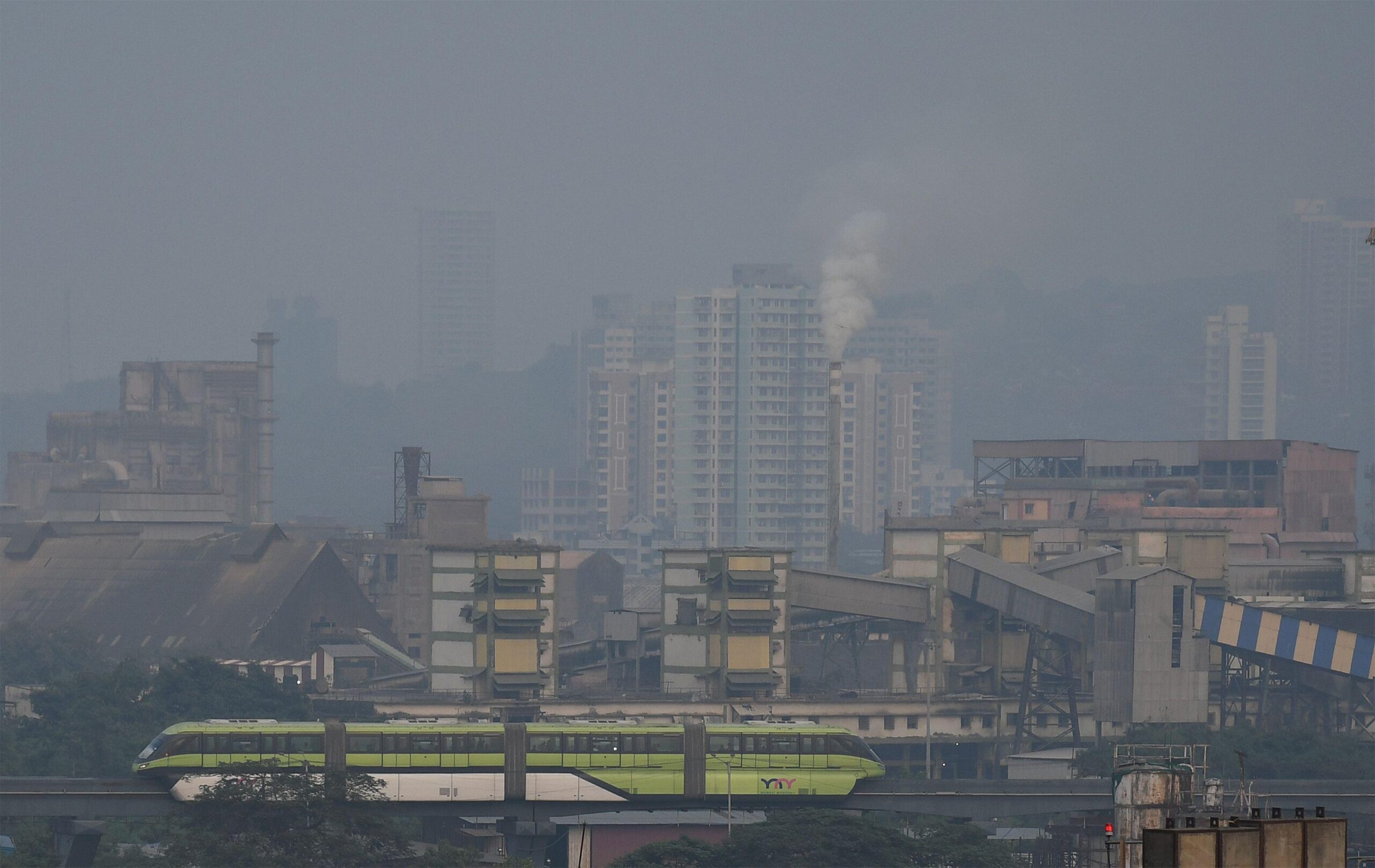
Image: iStock
We currently lack a clear global picture of national-level air pollution (i.e. PM2.5 data at the country-level), or the air pollution standards, targets, and approaches used by governments.
What is PM2.5?
Particulate matter (PM) is everything in the air that is not a gas and therefore consists of a huge variety of chemical compounds and materials, some of which can be toxic. This sort of air pollution is generated by everyday activities like driving cars, burning fossil fuels for heat and electricity, construction and agricultural work.
PM2.5 refers to particles less than 2.5 micrometres in diameter. This is the most damaging type of air pollution: breathing it in for just a few hours or days is harmful, and exposure over months or years is particularly dangerous. Because of these particles’ small sizes, the toxins they contain can enter the bloodstream and be transported around the body, lodging in the heart, brain and other organs.
PM2.5 is associated with multiple causes of death – including coronary heart disease, lung cancer, chronic obstructive pulmonary disease and pneumonia – as well as both cardiovascular and respiratory diseases including asthma. Children, pregnant women, the elderly, and people with heart and lung diseases are particularly vulnerable.
PM2.5 standards, policies, and targets
The UN Environment Programme has published reports that document air quality legislation across the world.4 These reports could form the basis of a recurring, comprehensive account of national ambient PM2.5 standards globally. In addition to these reports, some individual country reports provide information on annual average PM2.5 standards. A recent analysis by the Energy Policy Institute at the University of Chicago estimates that more than 100 countries and territories do not have any annual standards for PM2.5.5
Availability of government-produced ground monitoring data
The non-profit OpenAQ publishes regular reports detailing the availability of ground monitoring data produced by governments. In its 2022 report, it finds no evidence of air quality monitoring in 39% of countries, including for PM2.5.6 An additional 8% of countries appear to monitor air quality (which may or may not specifically include PM2.5) but do not share the data with the public.
Meanwhile, there is a large, recurring PM2.5 (and other pollutant) database produced by the World Health Organization (WHO) that shares city-level annual average data, largely submitted by government sources. This database is rich, but the data are not synchronous with one another; the data for some cities is from twenty years ago.
PM2.5 ground monitoring data
Current air quality technology – from advanced monitoring techniques to satellite infrastructure to machine learning analysis – shows that we have the technical capacity to produce regular, up-to-date air pollution data and to report on clean air progress of individual countries. However, as a global community we have not yet leveraged this technical capacity to create a global tracking system. Several non-profit, business, academic, and intergovernmental organisations have built systems that provide partial data but lack full global coverage. Many do not include Low
and Middle Income Countries, which suffer most from air pollution.7
These systems are also limited in terms of accuracy, temporal coverage, and concurrent coverage – each of which are needed to build a globally comprehensive picture of the annual pollution levels of each country. Some of the systems that rely on satellite-derived methods8 do create global snapshots of annual average PM2.5 data at the country-level. However, they do not explicitly communicate variation in the sources of these snapshots by providing country-level information to describe which locations lack a certain level of underlying ground monitoring data or other data that are used by these satellite-derived estimates. They are also not tightly coupled to the most up-to-date as possible government data sources that could improve these estimates. The degree to which the data are out of date and out of sync with one another reduces the dataset’s utility for tracking global progress and may reduce credibility in particular countries. Relying on data from non-government sources with varying methodologies makes it easier for governments to dismiss or ignore the data, weakening their ability to bring accountability.
These systems are also characterised by varying degrees of transparency in data and methods, and tend to vary by interface, communication methods, access, rules for data analysis, and sharing of metadata.
In terms of capturing country-level targets and policy goals, there have been individual country, regional or one-off global reports, but there is currently no global mechanism for gathering this information on a regular basis.
Towards a country-led system for global tracking progress
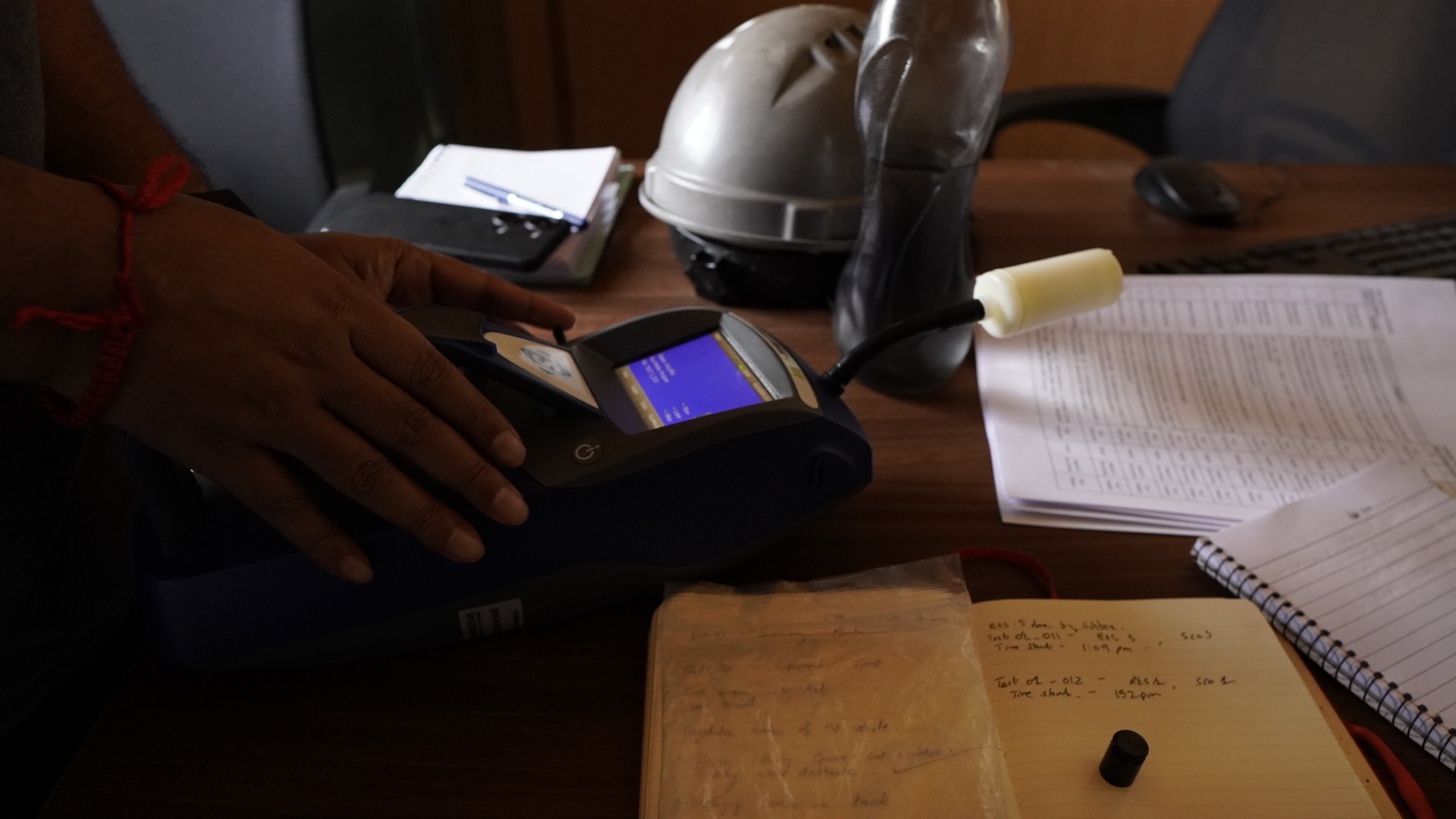
Image: Arvind Kumar/CEEW
Start with one pollutant, grow to more
While ideally countries would work on measuring and reporting all air pollutants, we recognize countries may have differing priorities and resources to devote to the issue. In case of limited resources, we recommend starting with a country-led system for tracking annual average concentrations of PM2.5 at the country level. This is because PM2.5 causes over ten times more deaths globally than the next most dangerous common air pollutant and is the pollutant already most widely measured by governments.9 We call for commensurate financial resources for developing countries to participate directly.
Focusing on a single pollutant can facilitate broader participation among countries to fully participate, make it easier to garner the necessary political and social will — and financial resources — needed to create a global tracking system, and create a framework that could then be scaled up to include other pollutants.
Over time the global tracking effort could expand to cover multiple pollutants, enabling us to make the case to more sectors that air pollution is a problem (e.g. ozone damage to agriculture especially for economies dependent heavily on that sector). Monitoring other harmful pollutants will also enable a deeper understanding of the overall health, climate and environmental impacts of air pollution.
Track outcomes and action regularly
Tracking national-level annual progress on reducing PM2.5 pollution ideally requires capturing metrics in two broad categories:
1) Outcomes: National and subnational (city) PM2.5 annual average data
2) Actions: Ambient PM2.5 country standards
Metrics in both categories should be gathered using a transparent, public framework, and any models used should be open-source so they can be accessed, improved and used by governments and the general public.
Adapt to an uneven data landscape – but incentivise investment in more
One of the challenges in building outcomes metrics is that, as flagged above, in many locations — especially low- and middle-income countries facing severe air pollution levels — government-produced data is not readily available and there may not be in-country capacity to model annual average PM2.5 levels with the data that does exist. Yet, there are few incentives or resources to help governments improve their air quality monitoring and modelling capabilities.
To address these gaps, Our Common Air recommends:
- investing in standardised, open-source approaches for combining available data into the strongest possible, or “best at country (or city),” estimates;
- providing data users with sufficient information about data sources to be able to assess the accuracy and completeness of the data that is available; and
- providing financial resources, non-fiscal incentives, and sustained capacity building for countries to upgrade their data quality and modelling capabilities, including direct financial support towards capacity-building activities.
This approach loosely follows the precedent of the World Bank’s Statistical Capacity Building and Partnership team. Housed within the Development Data Group, the team works with countries to enhance their ability to generate and use data for development. It provides technical support and project management services, and administers several funding mechanisms that support physical and human capital for data collection as well as innovation and exploration of new methods. It also helps track data quality so that data users can adjust analysis as needed – and improvements in quality can be recognized.
We discuss each element of this approach in more detail below.
Use “best at country (or city)” estimates to bridge data gaps
Calculating the annual average PM2.5 level for any country will, of course, rely on estimating air quality across the country. No country — no city — has continuous ground monitoring across its entire extent. To estimate these levels, a modelled combination of “gold standard” ground monitoring data, satellite data, and other data can be used to produce an estimate. This estimate is often termed “satellite-derived” data, but as described, this term actually is produced from a model, incorporating data from several sources.
Based on current technical capabilities and using data from satellites and other available sources, it would be entirely possible to produce a global, national-level, “best at country” report of annual average PM2.5 levels every two years.
“Best at country” reporting essentially means using the best available data sources a country has (for example, a mix of satellite and ground-level information) to build the most accurate, up-to-date, and complete picture of annual PM2.5 levels possible. For some countries, this may mean incorporating data from thousands of ground monitors, rich emissions inventories and meteorological data along with the satellite information. For others, perhaps everything is lacking except for the satellite information. Regardless, every country, regardless of the current state of their air quality infrastructure, would be able to produce a nationwide annual PM2.5 value using this “best at country” approach.
Specifically, we recommend collecting the following national and subnational PM2.5 metrics:
- “Best at country” national annual average outdoor PM2.5 data, measured in the same (and most current possible) year across all countries.
- “Best at city” annual average PM2.5 data for all cities with a population of 1 million or above in a given country, measured in the same (and most current possible) year across all cities in that country.
Countries would be given the ability to submit their “best at country (or city)” data, using their data sources and modelling capacities to produce an annual average PM2.5 level product in a manner that adheres to a globally agreed process (See Part 4). In cases where countries were uninterested or unable to run the models necessary or lack underlying data or were not provided with sufficient resources and training, an annual estimate would be produced for them by an overarching scientific body (See Part 4). In this way, no country would be left out of this recurring global assessment.
While imperfect, “best at country (or city)” data is adequate for determining the health impacts of PM2.5 pollution so that countries and global development assistance actors can track, incentivise, and set targets for reducing pollution along with targets for financial resources to support pollution abatement interventions.
Of course, these “best at country (or city)” measurements will vary in quality, as capacity and resources for air quality monitoring and modelling differs by country and there are limitations to satellite data alone. If the global dataset is to direct strategy for global development assistance efforts, identifying these gaps in national-level air quality information and capacity is essential.
Assessing data quality
At minimum, the quality of both “best at country (or city)” data should be classified by degree of adequacy. This will help identify where air quality management infrastructure needs more investment. This adequacy qualification should be decided by each country for themselves, with suggested frameworks for decision-making provided by an overarching scientific body, described in Part 4. In the case where a country does not make a categorisation, the general framework created by the overarching scientific body would be used by default, so all countries can be tracked for data quality.
To enable this assessment, the country or city providing the satellite or ground-based data would need to consider information about the methodology used to produce the data. If, for example, the “best at country” data for a given country relies on satellite-derived estimates, the adequacy of the underlying data going into the estimate (e.g. emissions inventories, regional ground monitoring data or lack thereof) should also be assessed.
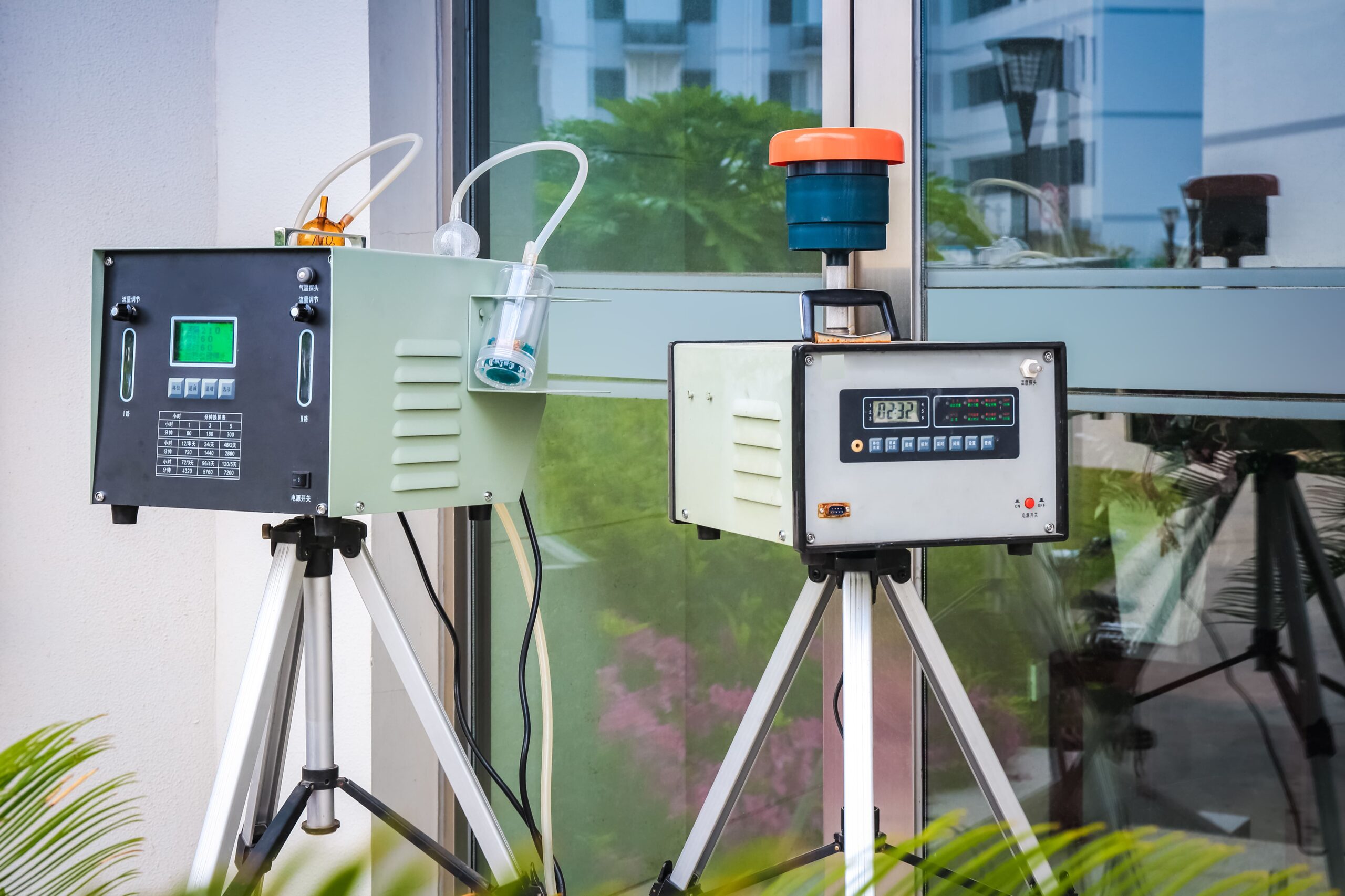
Image: iStock
Providing financial resources, non-fiscal incentives and building sustained capacity
The ability to estimate PM2.5 levels for countries and cities, even when they are not yet able to provide reliable ground monitoring data, is crucial for ensuring that countries are not left behind when it comes to development assistance and financing for capacity building in this area.
However, there are likely to be underlying inaccuracies in model estimates of PM2.5, which rely on satellite data in lieu of adequate ground monitoring data. Governments pinpointing where their current ground monitoring data is inadequate for these national-level estimates will help countries and development assistance actors decide where to invest resources in air quality monitoring. As such, countries that deem their ground monitoring not adequate can be incentivised to improve their monitoring infrastructure through finance.
We recognise that, during a period of high fiscal stress in many countries, the resources to establish and maintain the data tracking infrastructure must be made available to developing countries via various channels of development assistance. These would include financial resources for monitors but could also include non-fiscal incentives such as access to information and best practices, which allow policymakers to make informed decisions. Capacity building activities must also be sustained rather than one-off exercises.
In order to develop a globally comparable air pollution tracking system, robust funding streams would be needed, with regular tracking of financial flows and non-financial means of cooperation.
The Montreal Protocol’s Financial Mechanism (including a Multilateral Fund) is, perhaps, the best example of a dedicated facility to provide financial and technical cooperation. It was set up to meet the incremental costs (via grants and concessional financing) of monitoring and reporting on ozone-depleting substances. It was also designed to monitor other multilateral, regional or bilateral cooperation made available to the Parties.
Similarly, under the Paris Agreement, developed countries are expected to biennially communicate ex-ante climate finance. The Agreement’s Enhanced Transparency Mechanism asks developed countries to submit via a common tabular format in their Biennial Transparency Reports (BTRs) information on financial, technology development and transfer and capacity-building support they have provided and mobilised. The UN Framework Convention on Climate Change has a dedicated climate finance portal where the data can be accessed and compared.
Without sincere efforts to support countries in building this data tracking architecture, countries would hesitate to make further commitments to reduce air pollution for fear of global tracking that could put additional pressure on them to upgrade their climate commitments. The objective of building globally comparable data tracking goes hand in hand with guaranteed resources for countries to invest in such infrastructure and the related pollution abatement actions.
These outcome metrics on air pollution would preferably be provided by countries, if they are willing to use the modelling framework supported by the overarching scientific body (see Part 4). If a country is unable to produce the metrics on their own through modelling, this should be a key consideration for global development assistance actors when prioritising investment in technical capacity building.
Compile actions metrics across countries
To track actions – ambient PM2.5 country standards:
- Whether a country has set standards for annual and daily PM2.5 pollution and the level at which they are set, how recently they were set, and how they compare to other countries globally and within their region.
This information is needed so that the international community can support countries to increase their ambitions to tackle air pollution.
The information would need to be provided by a given country or at least pooled from the public domain. Tracking where the information does not yet exist or is not provided is also useful information for informing global clean air strategy and investment.
Reporting air pollutants under the climate accounting system
Each Party to the Paris Agreement is required to establish a Nationally Determined Contribution (NDC) and update it every five years. An NDC is a climate action plan to cut emissions and adapt to climate impacts. Some countries already include air pollutants in their NDC, where those air pollutants also impact on climate change. These include black carbon, otherwise known as soot, which is a component of PM2.5, and tropospheric (ground-level) ozone. These ‘super pollutants’, or Short-Lived Climate Pollutants (SLCPs), can be relevant for both mitigation and adaptation. In line with the enhanced transparency framework, countries party to the Paris Agreement will be required to submit biennial transparency reports. These can be informed by an air quality accountability system. Some countries have started to move to integrated inventories, including air pollutant emissions into their GHG inventories.
Who will build the accountability system and how?
Several types of actors — international organisations, non-profits, and technical groups — would need to play a role in building a collaborative tracking system. We do not lay out a precise prescription here, but we propose the criteria needed for actors involved in different functions of a collaborative accountability system.
Tracking global progress on air pollution requires an entity (or entities) to conduct five functions under three broad categories:
Administrative and government engagement:
Function 1: Overseeing and collecting the country-level metrics outlined above – whether reported by countries or a multilateral institution where a country is not able to provide the information.
Scientific expertise:
Function 2: Defining standard data protocols, technology standards, and accepted models for outcomes metrics, and ensuring country contributions meet those standards.
Function 3: Defining a scientific framework for the degree of adequacy of country-level ground monitoring coverage for countries to self-assess outcomes metrics (or for them to be assigned to a country, if it does not self-assess).
Function 4: Generating default outcomes metrics, where countries provide this information.
Policy expertise:
Function 5: Defining protocols and acceptable forms of actions metrics.
Which actors could do this work? Several UN agencies, such as the World Health Organization, World Meteorological Organization, and UN Environment Programme, among others could house, advise, or coordinate these efforts. Major development banks such as the World Bank and regional development banks (African Development Bank, Asian Development Bank, Inter-American Development, among others) as well as bilateral donors must help to finance this effort — and the sustained capacity building that is identified as stemming from this effort.
For Function 1, whoever oversees the entire process and is the ultimate recipient and distributor of the global tracking metrics, would need to have the following characteristics:
- Trusted by the global air pollution community: This could be an existing, respected, global institution or one that is set up and run by respected individuals and through processes that are transparent.
- Ability to operate independently, swiftly and neutrally: It is especially important when it comes to implementing the “best at country” architecture to move forward swiftly, accurately, and without political consideration.
For Functions 2 and 3, which require setting scientific standards, protocols, and frameworks, a working group of experts with geographical representation across the world, operating transparently and without concern to political considerations, would be needed to produce accurate information and foster trust.
Function 4 could rely on, for example, one of the approved satellite-derived estimate models established by the independent scientific working group. Over time, once there is an approved list of open-source models/data-type sources, countries could also run these models themselves. They would be incentivised to do so; to have control of this piece of the process (they would also have to do this using open-source systems for verification). For many countries, this could strengthen human and technical capacity.
For Function 5, which requires gathering national standards information, UNEP would be an ideal institution, since they have recently been compiling this information.
What entity could perform the first four functions?
Rather than a single entity approach, a model like UN-Water that coordinates the UN’s work on water and sanitation could be applied which pulls in a variety of relevant international organisations. In this coordination mechanism model, Senior Programme Managers that represent the relevant international organisations provide governance, and a Management Team helps assist and coordinate that governance.
Such a model is attractive because standing up and executing the five outlined functions requires a wide breadth of scientific, policy, and political expertise and purview that are likely not found in one entity. Meanwhile, there would need to be a governance structure and management team to execute the coordinating mechanism’s strategy and technical objectives, as well as to organise and communicate the outputs.
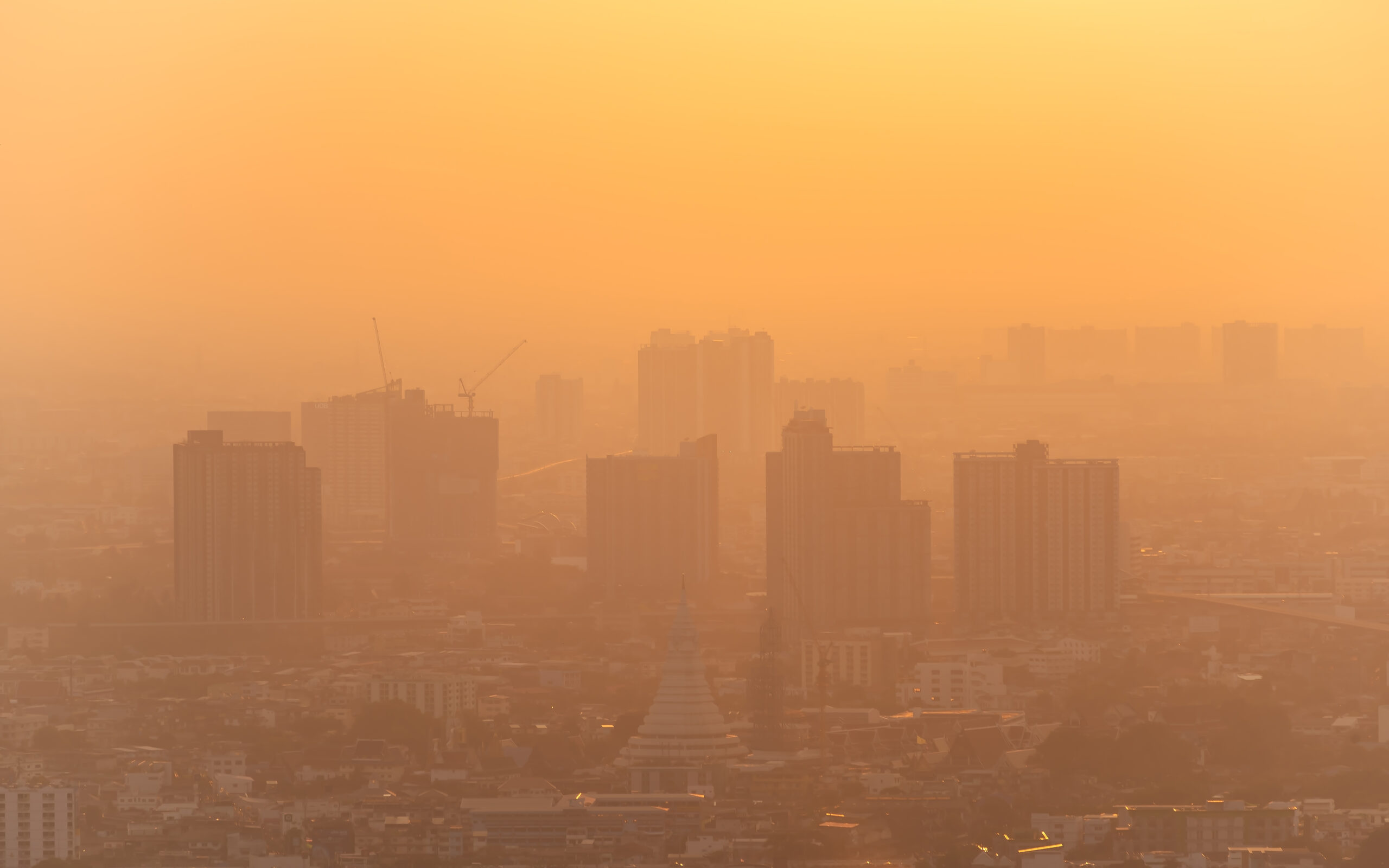
Image: iStock
Turning data into action
Gathering information to create a clearer picture of global PM2.5 data and policy is not enough. To turn progress anywhere into progress everywhere as quickly as possible, we must learn from each other and drive one another’s ambitions and demonstrate global solidarity in providing the resources to back these ambitions.
Hold an annual global air pollution convening
To drive decision-making based on a biennial report and in line with the recent UNEA-6 Air Quality Resolution, we suggest that whoever performs Function 1 above should hold an annual global convening. If a report were to be released every two years that tracked global progress on PM2.5 pollution, the initial release could coincide with a convening that sought commitments to raise policy ambition (from national and city-level governments) and international development assistance and finance. Concurrently, the convening should seek commitments to raise the financing of air quality data tracking and capacity building activities from bilateral and multilateral as well as philanthropic donors. Since the global tracking system will be for countries to report and compare against other countries, philanthropic funding cannot substitute for funding from official sources.
In the “off” years of the report, the conference would focus on convening city- and national-level civil society and relevant government agencies for peer-learning and technical capacity building.
Raising ambition and creating a shared global goal
To make clean air a reality for all as soon as possible, Our Common Air recommends that political authorities at the municipal, state/provincial, national, and regional levels, pledge to set and achieve the WHO PM2.5 annual average guideline (5 µg/m3) – or, recognising each has different starting points and circumstances, an ambitious target based on the WHO interim guidelines — by 2030. Political authorities would convene, lead, and act in concert with politically viable coalitions that include non-state actors like businesses, civil society, academia, think tanks, and financiers.
Additionally, we recommend developing a global, combined target for PM2.5 pollution. This should be informed by lessons from other sectors that have set and made progress against global targets, like energy efficiency, ocean protection, the Global Methane Pledge, and the Paris Agreement for reducing greenhouse gas emissions.
Broadly, we recommend a common but differentiated approach based on respective capabilities, which allows countries to consider their different starting points and circumstances when setting their targets. Developed countries would be expected to demonstrate greater ambition at the outset, with developing countries matching the high ambition targets as soon as is feasible.
Recommendations
Adequately measuring, tracking and monitoring air pollution levels in a country-led fashion is a critical part of the clean air puzzle. By tracking global progress, we can understand where the problem is greatest, learn lessons about policies that work, incentivise finance and technical capacity building, and ladder up from the national to the global. We can encourage a race to the top, where clean air is in everyone’s interests.
Tracking could start with PM2.5, the most dangerous form of air pollution and one which some governments already monitor and have targets to reduce. Some air pollutants are also bad for the climate, so they could be addressed, as per nationally determined priorities, under climate reporting mechanisms. Once the system is developed for a single pollutant, others could be added, such as black carbon. Governments, intergovernmental and multinational bodies, and funders all have a role to play, and some of the specific actions for them to take are listed below.
1. Following an intergovernmental process, key actors should create a global, country-led system to track annual average PM2.5 levels at the national-level for every country. This system should prioritise and incentivise data sharing by countries and utilise fully transparent methodologies.
2. Robust financing streams should be made available with regular tracking of financial flows and non-financial means of cooperation. Maximum participation in the country-led global tracking process should be enabled via dedicated funding that builds air quality monitoring capacity in countries where there is currently no or little capacity. Pursuant to the enhanced transparency mechanism under the Paris Agreement, developed countries should explicitly list in their BTRs their financial contributions for tracking super pollutants in developing countries, and the same should be collated in the UNFCCC portal. For tracking other air pollutants, their financial contributions should be reported transparently via other portals, such as that of the Joint SDG Fund.
3. Where tracking is simply not yet possible in-country, there will be a default method used to estimate PM2.5 levels so that no country is left behind from the start. Countries should be assured that if resources were inadequate to build the air quality monitoring capacity, they would not be pressured to adopt new targets for air pollution abatement.
4. Every country should have at least one sustained, high-quality, government-operated PM2.5 monitor that provides fully open data to the public by 2026 which could be supplemented by hyperlocal, low-cost real-time sensors to create a hybrid network. While a single monitor is insufficient in giving an accurate country-wide picture, its installation, management, ability to be used to calibrate lower cost sensors near it, and the open data produced from it would be a meaningful step forward in the 39% of countries across the world that do not yet have this basic capability.4
5. All governments and non-state actors such as cities, businesses, and investors, should set targets to limit levels of PM2.5 in line with World Health Organization guidelines by 2030 — or, recognising each has different starting points and circumstances, an ambitious target based on the WHO interim guidelines. They should annually report on progress towards the target.
6. A process should be developed to create a combined global target for PM2.5 reductions, akin to other global goals, such as net zero by 2050. A representative group from a broad array of sectors engaged in addressing air pollution should develop this global target.
7. Commit to urgent action on short-lived climate pollutants and consider them where they are not yet determined as a national priority. With adequate resources and enhanced capabilities as the key enablers, Governments should integrate air pollution outcomes into the review of their Nationally Determined Contributions (NDCs). With relevant means of implementation, they should rapidly address short-lived climate pollutants (SLCPs), set ambitious SLCP emission reduction targets and take other steps, such as developing integrated air pollution, SLCP, and greenhouse gas inventories.
Endnotes
1 Jha, Akshaya, and Andrea La Nauze. 2022. “US Embassy Air-Quality Tweets Led to Global Health Benefits.” Proceedings of the Na-
tional Academy of Sciences 119 (44): e2201092119. https://doi.org/10.1073/pnas.2201092119.
2 Sawant, Viraj, Chris Hagerbaumer, Colleen Marciel F. Rosales, Margaret Isied, and Russ Biggs. 2022. 2022 Open Air Quality Data: The Global Landscape. Washington, D.C.: OpenAQ. https://documents.openaq.org/reports/Open+Air+Quality+Data+Global+Land-
scape+2022.pdf.
3 Vahlsing, Candace, and Kirk R. Smith. 2012. “Global Review of National Ambient Air Quality Standards for PM10 and SO2 (24 h).” Air Quality, Atmosphere & Health 5 (4): 393–99. https://doi.org/10.1007/s11869-10-0131-2.
4 United Nations Environment Programme. 2021. Regulating Air Quality: The first global assessment of air pollution legislation. Nairobi:
United Nations Environment Programme. https://wedocs.unep.org/bitstream/handle/20.500.11822/36666/RAQ_GAAPL.pdf.
5 Energy Policy Institute at the University of Chicago. 2024. “A Country’s First Air Quality Monitor: The Most Valuable Step to Clean Air.”
March 6, 2024. https://epic.uchicago.edu/insights/a-countrys-first-air-quality-monitor-the-most-valuable-step-to-clean-air/
6 Sawant, Viraj, Chris Hagerbaumer, Colleen Marciel F. Rosales, Margaret Isied, and Russ Biggs. 2022. 2022 Open Air Quality Data: The Global Landscape. Washington, D.C.: OpenAQ. https://documents.openaq.org/reports/ Open+Air+Quality+Data+Global+Landscape+2022.pdf
7 Data tracking entities include: a number of UN agencies that maintain data repositories with the ambition of global coverage: WHO,
UNEP (in collaboration with IQAir), WMO (World Data Centers); national and regional initiatives such as NASA (satellite & ground-based
sensors/Aeronet) and Copernicus Atmospheric Monitoring Service (CAMS); and non-governmental initiatives such as OpenAQ and IQAir
8 An example of an effort to create a fully global annual average PM2.5 dataset is the Atmospheric Composition Analysis Group at
Washington University in St. Louis.
9 Gill, Tom. 2017. “Major New Study Quantifies Health and Environmental Impacts of Excess Nitrogen Oxide Emissions from Diesel Vehicles.” May 15, 2017. https://www.sei.org/featured/health-and-environmental-impacts-emissions/; Health Effects Institute. 2024. State of Global Air 2024. Special Report. Boston: Health Effects Institute. https://www.stateofglobalair.org/sites/default/files/docu-
ments/2024-06/soga-2024-report_0.pdf.
Latest Publications
11 April 2024
Clean Air: A Call to Action
This Call to Action is focused on making the economic case for clean air, financing the investments needed, setting targets and tracking progress, and sharing solutions.
Our Common Air
11 April 2024
Investing in Clean Air
Investing in clean air requires a systemic approach that addresses the root causes of pollution.
Our Common Air
